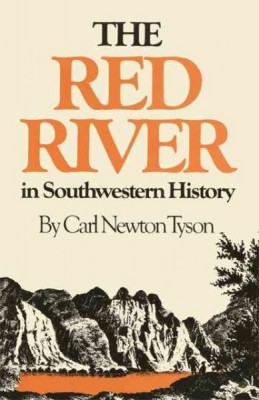| The Red River in Southwestern History Contributor(s): Tyson, Carl Newton (Author) |
|
 |
ISBN: 0806187050 ISBN-13: 9780806187051 Publisher: University of Oklahoma Press OUR PRICE: $21.73 Product Type: Paperback - Other Formats Published: December 1981 |
| Additional Information |
| BISAC Categories: - History | United States - State & Local - Southwest (az, Nm, Ok, Tx) |
| Dewey: 976.6 |
| Physical Information: 0.55" H x 5.5" W x 8.5" (0.68 lbs) 238 pages |
| Themes: - Cultural Region - Southwest U.S. |
| Descriptions, Reviews, Etc. |
| Publisher Description: In The Red River in Southwestern History, Carl Newton Tyson traces the river's history from the time of early Spanish and French explorers to the present day, leading his readers to a new appreciation of the river and the region. From the Staked Plains of the Texas Panhandle the river flows down to buffalo and prairie dog country and through the Cross Timbers. It continues eastward to the Great Bend and through the cypresses of Louisiana's bayou country, joining the Mississippi River south of Natchez. Whereas the Red River was a source of water to the Spaniards as they searched for gold, at Natchitoches, French trader Louis Juchereau de St. Denis traded with the Caddo Indians. Conflicts soon developed between French traders and Spaniards in Texas as they competed for land along the Red. Years later, the Red River featured again as part of the settlement in the 1819 Adams-On s Treaty, negotiated by Spanish minister Luis de On s y Gonzales and U.S. secretary of state John Quincy Adams, which finally brought to an end the western boundary disputes between Spain and the United States lingering since the 1803 Louisiana Purchase. In 1852 Randolph Marcy discovered the source of the Red River--a mountain rivulet cutting a deep canyon through the Staked Plains. Marcy's testimony in the Greer County border dispute between Oklahoma and Texas was key to the U.S. Supreme Court decision favoring Oklahoma. In the decades between 1930 and 1970, dams were built along the Red by the U.S. Corps of Engineers to control floods, generate electricity, and create lakes for recreation along the Oklahoma-Texas border. |
Contributor Bio(s): Tyson, Carl Newton: - Carl Newton Tyson, whose special field of interest is western American history, received his Ph.D. from Oklahoma State University. He is CEO at Thinkwell in Austin, Texas, and coauthor of The McMan: The Lives of Robert M. McFarlin and James A. Chapman. |